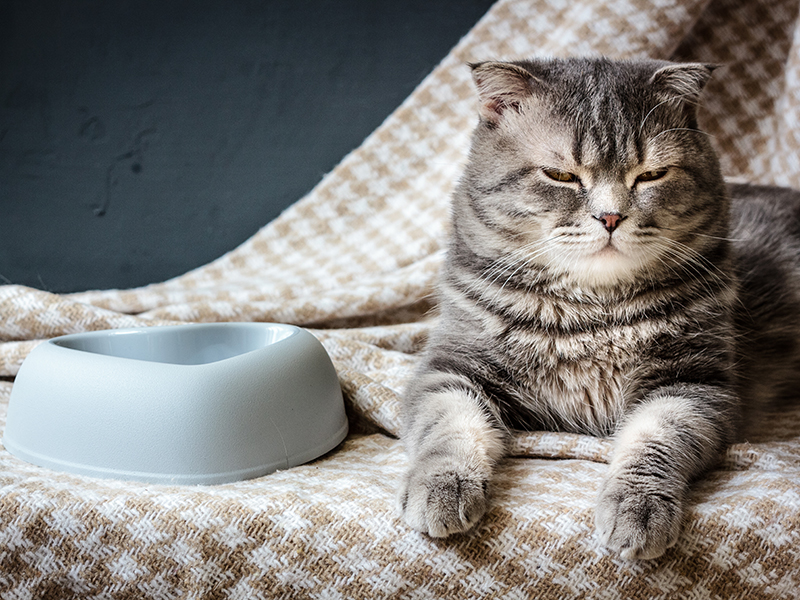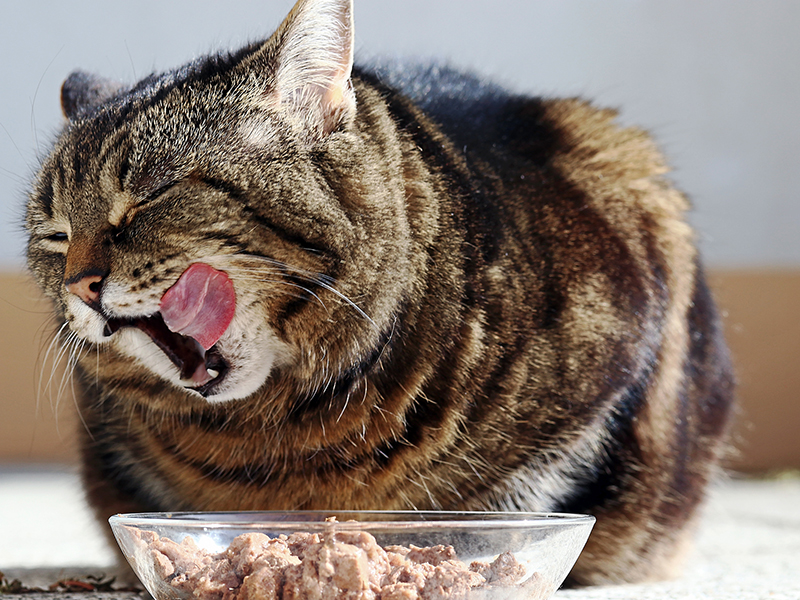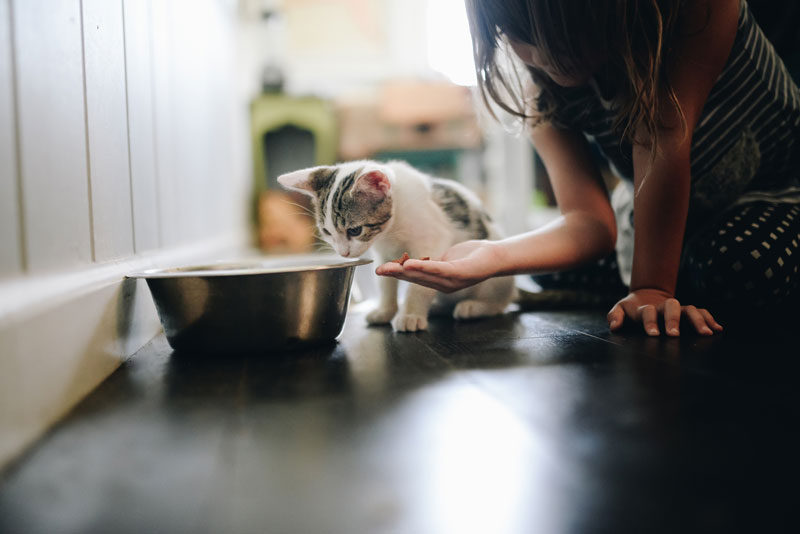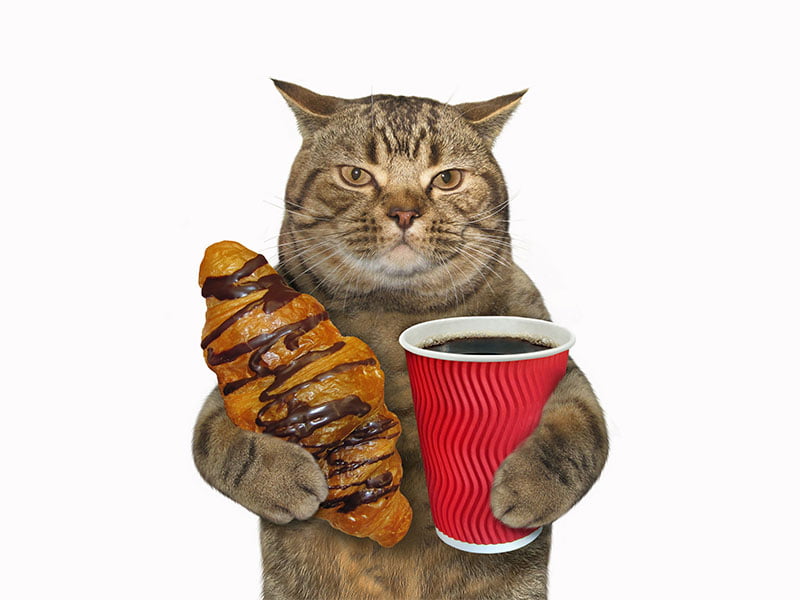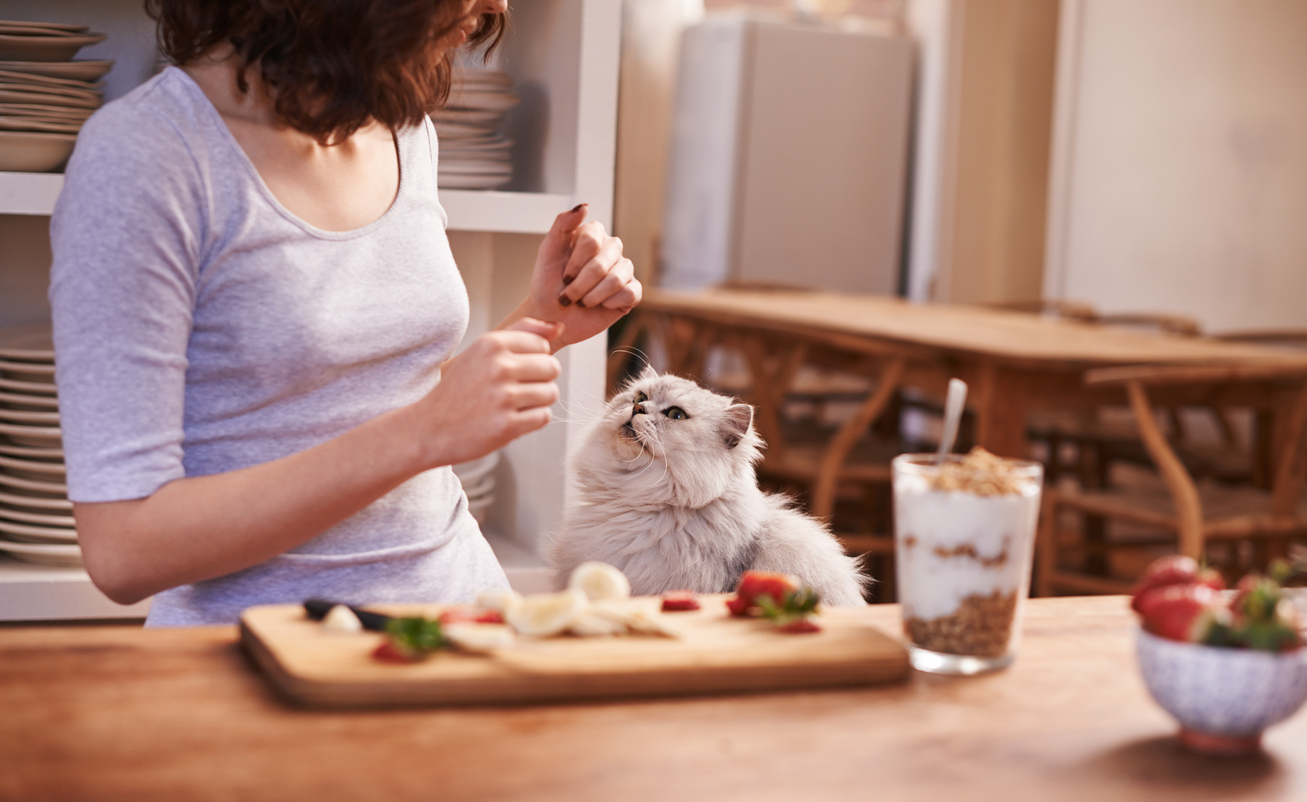With so much focus on the environment these days, cat owners are becoming more and more interested in making environmentally responsible decisions. “I think for all my clients, sustainability takes a backseat to nutrition,” says Dr. Patricia Joyce, a veterinarian at BluePearl Veterinary Partners. “With that said, most pet owners would love to make ethical environmental choices in all aspects of their lives, including what they feed their cats.”
The pet food industry is taking note. In a recent survey conducted by the trade magazine Petfood Industry, 62 percent of respondents reported believing that consumers value sustainability and cited consumer demand as one key reason for their operations adopting green practices. Below, Joyce and Virginia-based emergency veterinarian Dr. Katy Nelson weigh in on balancing your cat’s nutritional requirements with environmental responsibility, and other ways to protect the planet while caring for your cat.
Cat Nutritional Needs
Cats are obligate carnivores, subsisting on diets that are high in animal protein. “A cat cannot be a vegetarian, no matter its owner’s preferences,” says Nelson. “Do your research and find a pet food manufacturer that emphasizes humane treatment of its protein sources, but do not force a vegetarian diet on your cat.”
If the resources it requires to bring beef to your pet’s dish offend your sensibilities, fish offers a healthy alternative for cats, and the cat food industry is taking particular pains to make environmentally sound fishing choices. The World Wildlife Fund, for example, is working with some companies to develop a fish sustainability program, making sure products do not include overfished species.
Some protein sources raised on land also leave a relatively small environmental footprint. For example, because of a chicken’s size, transporting it “from farm to fork” results in a substantially smaller amount of greenhouse gas emissions than the transportation of beef does.
Other Ways to Help the Environment
“At the end of the day, the goal is to feed your pet the best-quality food,” says Nelson. “If that’s beef, then it’s beef. You can try to reduce your environmental footprint in other ways that don’t negatively impact your cat’s well-being. Ride your bike rather than drive. Recycle.”
Joyce also suggests using biodegradable kitty litter in place of clay litter, 2 million nonbiodegradable tons of which are currently dumped into landfills each year. And surf the Web to start researching the following nonfood aspects of your cat’s kibble company:
- Packaging. Look for companies that use renewable or recycled materials for their packaging. For example, some dry cat food now comes in resealable plastic bags that can be returned to the grocery store after use for recycling.
- Energy consumption. Some commercial pet food makers have made public commitments to using renewable energy sources, including wind and solar power. Look for these commitments, as well as manufacturing plant Leadership in Energy and Environmental Design (LEED) certification from the U.S. Green Building Council.
- Giving back. Corporate philanthropy often supports green causes. Pet food manufacturers in North America are involved with all sorts of philanthropic programs — from dedicating a percentage of their profits to supplying clean water to children, to supporting local conservation efforts.
With the pet food industry coming on board to support a whole host of changes that are environmentally friendly, cat owners can feel more optimistic about reducing their cats’ carbon paw prints.


